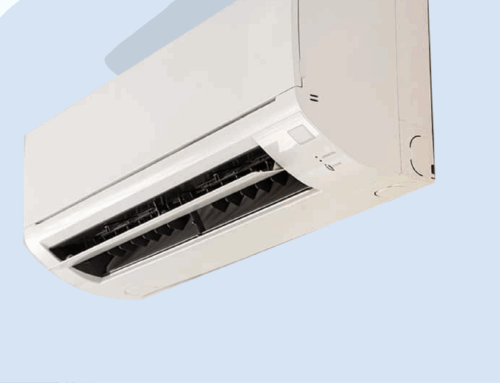What is the Average Cost to Heat a Home with Natural Gas?
by Tyler Castle
13.3 min read

When the cold months roll in, few things hit your wallet harder than the cost of keeping your home warm. For many families, their natural gas bill becomes one of the biggest monthly expenses of winter.
The truth is, there isn't a one-size-fits-all answer to "How much does it cost to heat a home with natural gas?" Since costs vary depending on factors like where you live, the size and age of your house, how efficient your furnace is, and even the type of energy plan you're on.
But as an energy expert with 35 years of experience as an energy supplier, we certainly know our way around a gas bill. So, we can help you get a close estimate of just how much it costs to heat your home with natural gas.
In this guide, we'll break down the average cost to heat a home with natural gas, from the national picture down to what it looks like in the Midwest particularly in Ohio, Pennsylvania, Illinois, and Michigan. We'll also look at the factors that make bills higher or lower, and share practical ways to keep your home comfortable without overspending this winter. Let's dive in!
Key Points of This Article:
- The average cost to heat a U.S. home with natural gas during winter is about $566.72 for the season, or roughly $141.68 per month, based on typical usage and January 2025 rates.
- Midwest homes tend to use more gas and about 15.08 MCF/month and average a monthly cost in the Midwest for a gas bill at $186 per month.
- Home size and efficiency play a major role in heating costs—larger homes, poor insulation, and older furnaces lead to higher bills, while energy-efficient upgrades can reduce expenses.
Average Cost to Heat a Home with Natural Gas in the U.S.
The average cost to heat a home with natural gas in the U.S is around $566.72 for all of winter (from November to February); or $141.68 a month.
Here's how we calculated this estimate: nationally in mid-winter, a typical U.S. household uses about 46 MCF of natural gas to keep warm.
The U.S. Energy Information Administration (EIA) reports that the average residential price of natural gas in January 2025 at about $12.32 per thousand cubic feet (MCF) and one MCF equals roughly 10.37 therms.
At the January 2025 natural gas rate of $12.32 per MCF multiplied at 46 MCFs throughout four months, that works out to around $566.72 for all of winter.
Now let's break it down to a more localized level to give you a clearer picture on what your bill might look like.
We took a look and compiled real data from our Santanna customers. Our data shows that our Midwest households average 15.08 MCF per month between peak winter months from November – February; a noticeably higher draw than the national estimate.
From our customer data we found that the average cost to heat a home with natural gas at the same January 2025 market rate, averages out to $186 per month.
Even among our own team, natural gas remains the go-to choice for home heating. In a recent survey, 65% of Santanna employee-owners said they heat their homes with natural gas. While our team lives across several different states, it shows just how widely used and trusted natural gas is for keeping homes comfortable in colder months.
Keep in mind that your actual cost depends on your home's size, insulation, furnace efficiency, and utility fees. In the same way, natural gas rates, delivery charges, and taxes still vary by state, so localized totals will likely vary from your individual bill.
Average Cost to Heat a Home with Natural Gas in the Midwest
Heating costs can look very different across the Midwest; and no one knows this more than our customers in Ohio, Pennsylvania, Illinois, Indiana and Michigan.
To give you a better understanding of a localized average heating bill, we've pulled real customer data to show you what your costs might look like at a state level.
Based on our customer data, here's how the average monthly residential natural gas cost compares by state during peak heating periods in the Midwest. Natural gas rates are based on January 2025:
Estimated Monthly Natural Gas Heating Costs (based on January 2025 Rates)
| State | Avg Monthly Usage (MCF) | Average Natural Gas Rate ($/MCF) | Estimated Monthly Cost |
| Ohio | 13.60 | $9.13 | $124.17 |
| Pennsylvania | 13.57 | $12.52 | $169.90 |
| Illinois | 18.66 | $8.19 | $152.83 |
| Michigan | 14.32 | $9.27 | $132.75 |
| Indiana | 12.41 | $8.80 | $109.21 |
When comparing Midwest states, you can see just how much local gas rates and household usage affect monthly costs.
Pennsylvania has the highest estimated winter gas bill at around $170 per month, driven by higher average rates per MCF; Illinois follows closely behind at $153.
Meanwhile, Ohio and Michigan land in the middle range at $124 and $133 per month balancing moderate usage with average rates. Indiana households see the lowest average at $109 per month, thanks to lower usage and slightly cheaper gas prices.
How Much Does It Cost to Heat a Home with Natural Gas by Home Size?
Heating costs don't just depend on your state's natural gas rate; the size of your home makes a big difference, too. A smaller home with less space to heat will naturally use less gas, while larger homes with more square footage require more energy to stay warm.
But how does home heating with natural gas truly compare when it comes to size? Let us show you.
In the table below, we've estimated monthly heating costs for the common home sizes using our customer data. These figures are based on the average monthly usage (measured in MCF) and the typical natural gas rates in Ohio, Pennsylvania, Illinois, and Michigan.
Estimated Monthly Natural Gas Heating Costs by Home Size (January 2025 Rates)
| Home Size | Estimated Usage (MCF/mo) | Ohio | Pennsylvania | Illinois | Michigan | Indiana |
| Single Person (800 sq. ft.) | 11.12 | $101.53 | $139.22 | $91.07 | $103.08 | $91.07 |
| Couple, No Kids (1000 sq. ft.) | 12.51 | $114.22 | $156.63 | $102.46 | $115.97 | $102.46 |
| Family w/ 2 Kids (1800 sq. ft.) | 14.47 | $132.11 | $181.16 | $118.51 | $134.14 | $118.51 |
| Extended Family (2500 sq. ft.) | 16.34 | $149.18 | $204.58 | $133.82 | $151.47 | $133.82 |
These figures now reflect actual average monthly consumption drawn from Santanna customers, multiplied by each state's January 2025 rate.
This gives you a ballpark idea of what to expect, but remember, your actual bill may be higher or lower depending on insulation quality, window efficiency, furnace performance, and how cold the winter is where you live.
Why Home Size Matters in Home Heating Costs
The size of your home has a big impact on how much natural gas you use for heating. Larger homes simply have more square footage to warm, which means furnaces run longer and consume more fuel. But square footage is not the only factor. Your heating bill can also be shaped by:
- Insulation and windows: Well-insulated homes and energy-efficient windows keep warm air inside, reducing the amount of gas needed to maintain comfort. Poor insulation means the furnace has to work harder.
- Furnace efficiency: Older furnaces may only convert 60–70% of gas into usable heat, while modern high-efficiency furnaces can reach 90% or more. That difference shows up directly on your bill.
- Outside temperature: Colder winters in states like Ohio and Michigan mean more heating demand compared to milder regions.
- Utility charges: Supply is only part of the bill. Delivery fees, service charges, and state or local taxes vary widely and can add significantly to monthly costs.
- Lifestyle habits: Keeping the thermostat set higher, heating unused rooms, or skipping regular furnace maintenance can all increase gas usage.
Be sure to monitor these factors every season before heating usage spikes. There are some things like gas rates you can't control but these, you can, which can lead to potentially lower bills!
A Closer Look at What It Might Cost to Heat Your Home in the Midwest
Heating costs can look very different depending on where you live, the size of your home, and how efficient your furnace is. To give you a clearer picture, here are a few hypothetical examples of what a winter heating bill might look like across the Midwest.
Small Condo in Illinois
An 850 sq. ft. condo in Chicago with good insulation averages about 11.12 MCF of natural gas use in January. At Illinois' January 2025 rate of $8.19/MCF, that's roughly $91.07 for a monthly gas bill.
With dense urban housing and efficient building codes, many smaller homes and condos in Illinois benefit from shared walls that reduce heat loss, sometimes keeping monthly costs on the lower end.
Starter Home in Ohio
A 1,300 sq. ft. Columbus home with average insulation typically uses around 12.51 MCF per month in mid-winter. At Ohio's $9.13/MCF rate, that equals about $114.22 in gas charges per month.
Ohio's winters can be moderate compared to its northern neighbors, but older windows or less efficient furnaces can easily push costs higher, especially during cold snaps.
Typical Family Home in Pennsylvania
A 1,800 sq. ft. home near Pittsburgh averages about 14.47 MCF of natural gas use in January. With Pennsylvania's higher rate of $12.52/MCF, that's about $181.16 per month in winter.
Larger Suburban Home in Michigan
A 2,000 sq. ft. Grand Rapids home with an older furnace comes in at roughly 16.34 MCF a month. At Michigan's $9.27/MCF rate, that's around $151.47 for a monthly gas bill.
Because Michigan experiences longer and colder winters, heating systems work harder and run longer, making efficiency upgrades and consistent maintenance especially valuable for managing winter costs.
How Much Does Natural Gas Cost?
It's well known that natural gas is far cheaper to heat your home than electricity. Often by two to three times less when comparing cost per unit of energy. That's one reason most Midwest homes rely on gas furnaces to keep warm through long winters.
Natural gas prices are usually measured in dollars per thousand cubic feet (MCF). As of June 2025, the U.S. Energy Information Administration (EIA) reports that the average residential price of natural gas is about $23.15 per MCF.
It's important to understand that these rates change monthly due to factors like seasonal demand, weather conditions, regional supply, and storage levels. During colder months, prices tend to rise as consumption increases, while summer rates are typically lower.
How Much Does It Cost to Connect Natural Gas?
For homeowners considering natural gas heating for the first time, installation is a major part of the cost equation.
To connect a new natural gas furnace, it generally ranges from $3,800 to $10,000, with advanced high-efficiency or modulating systems reaching closer to $12,000. These furnaces are often set up in basements, utility rooms, or designated closets, and they require both adequate space and proper ventilation.
It's also important to note that natural gas heating requires access to existing gas lines. If your home isn't already connected, extending service lines can add a significant expense to your upfront investment.
Installation of a brand new gas line can cost anywhere from $260-$820 according to Angie.
Why Is My Gas Bill So High?
It's common to feel surprised when your natural gas bill spikes in the winter. Colder weather, larger or poorly insulated homes, furnace efficiency, plan type, and even extra charges from utilities all play a role. Everyday use of appliances like water heaters, dryers, or fireplaces can also add to your total.
Instead of breaking it all down here, we've put together a full guide that walks you through the most common causes, and what you can do about them. Read our full guide here.
Tips to Lower Your Natural Gas Heating Bill
You can't control the weather, but you can take steps at home to keep your natural gas bill from climbing too high. Here are some of the most effective ways:.
- Seal drafts and improve insulation: Close gaps around doors, windows, and attic spaces. This keeps warm air in and cold air out, so your furnace doesn't have to run as often.
- Use a programmable or smart thermostat: Lowering the temperature when you're asleep or away—even by just a few degrees—can make a noticeable difference over time.
- Maintain your furnace: Schedule annual tune-ups and replace filters regularly. A clean, well-serviced system runs more efficiently and uses less gas.
- Adjust your habits: Wear layers indoors, use blankets, and keep doors closed to unused rooms. Small changes in daily routines can reduce how often your furnace kicks on.
- Upgrade to energy-efficient equipment: If your furnace is more than 15 years old, replacing it with a high-efficiency model can save significant money in the long run.
- Lower your water heater temperature: Many water heaters are set higher than needed. Reducing the setting to 120°F saves gas while still giving you plenty of hot water.
- Take advantage of sunlight: Open curtains or blinds on sunny days to let natural heat in, then close them at night to hold warmth inside.
- Use ceiling fans in reverse: Setting fans to spin clockwise at low speed pushes warm air down from the ceiling, helping rooms feel warmer without turning up the thermostat.
- Cook and bake wisely: Using the oven adds extra heat to your home, which can help reduce furnace use. On the flip side, avoid running exhaust fans too long, as they pull warm air out.
- Add insulation to ducts and pipes: Wrapping exposed ductwork or hot water pipes in unheated areas prevents heat loss and reduces the energy needed to keep your home comfortable.
Pros and Cons for Home Heating With Natural Gas
Natural gas is the most common way households in the U.S. heat their homes, especially in colder regions like the Midwest. If you're using it now — or considering switching, it helps to understand both the benefits and the trade-offs.
Pros of Natural Gas Heating
- Cost-effective compared to other fuels: On average, natural gas has been cheaper than heating oil, propane, or electricity for the same amount of heat produced. This is why many families still prefer it for winter heating.
- Reliable supply: Unlike electricity, which can be interrupted during power outages, natural gas service is usually more consistent and dependable.
- Quick, powerful heat: Gas furnaces deliver warm air faster than most electric systems, which helps keep large homes comfortable even on very cold days.
- Established infrastructure: In areas where natural gas lines already exist, connecting your home is straightforward and widely supported by utilities.
Cons of Natural Gas Heating
- Price fluctuations: Even though it's generally cheaper, natural gas prices can rise during high-demand winters or when market conditions change. Bills may feel unpredictable if you're not on a fixed-rate plan.
- Not available everywhere: If gas lines don't reach your neighborhood, connecting can be expensive or not possible at all.
- Environmental impact: Natural gas is cleaner than coal or oil, but it's still a fossil fuel. Burning it releases carbon dioxide, contributing to climate change.
- Upfront equipment costs: Installing or replacing a gas furnace can cost thousands of dollars, especially if you upgrade to a high-efficiency model.
FAQs
Is gas heating cheaper than electric?
Yes, in most regions natural gas costs less per unit of heat than electricity. However, in mild climates, efficient heat pumps may be competitive.
Why do my gas bills vary so much from month to month?
Bills change with weather, how much gas you use, your rate plan, and extra fees added by your utility.
Can a fixed-rate plan save me money on natural gas?
A fixed-rate plan provides rate stability, protecting you from market spikes in the winter. While it may not always be the lowest, many homeowners prefer it for budgeting.
Heating with natural gas is usually affordable, but bills can swing depending on your state, home size, and rate type. By understanding what drives costs (and making smart choices about efficiency and energy plans) you can take control of your winter bills.
With Santanna's Unlimited Energy plan, you'll have peace of mind knowing your heating supply charge is predictable, no matter how cold it gets.* Explore our plans today and keep your home warm without the worry.
* Restrictions apply. Enrollment based upon program eligibility. Customers using more than 125% of normal monthly usage as determined by Santanna may be required to switch plans.
Tyler is an experienced energy professional, having worked for Santanna Energy Services, for the past four years. He is passionate about renewable energy and believes that diversifying the energy grid is the key to a sustainable future. Tyler is dedicated to supplying consumers with the best possible energy solutions and works diligently to make sure that Santanna can deliver the highest quality service.







